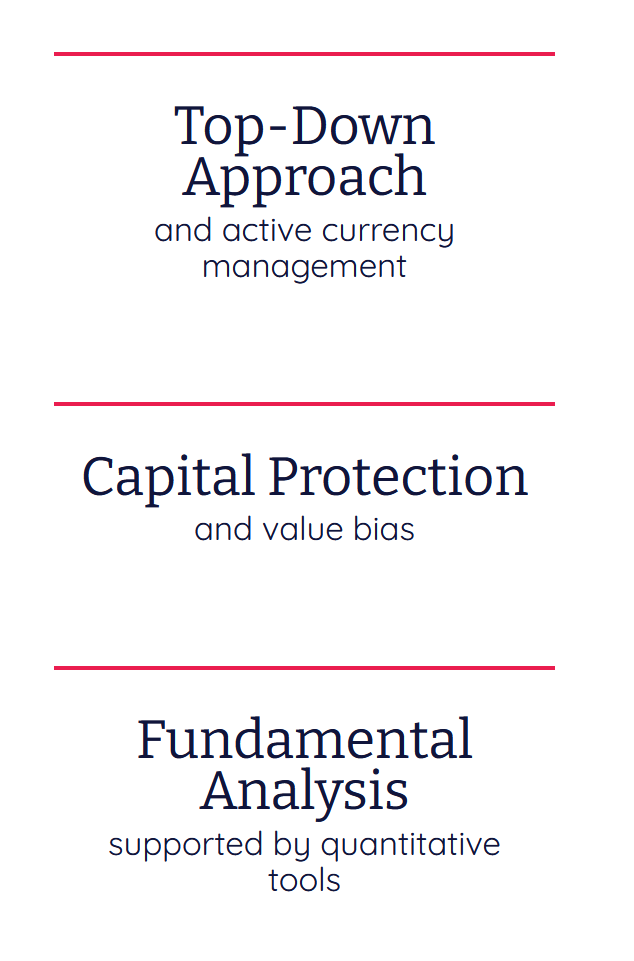

Strategies
Global Equities (Developed Markets)
A globally diversified equities portfolio that generally invests in companies located in developed countries.
ESG
A broadly diversified equity portfolio that invests mostly in firms that are leaders in terms of sustainable practices and are located in developed countries.
Asian & Europe Equities
A broadly diversified equities portfolio that generally invests in firms located in developed European and Asian countries.
Emerging Market Equities
Diversified equity portfolio with a focus on firms located in emerging markets across the world.
Global Environment
This quantitative method invests in a group of firms who are leaders in their industry in terms of environmental criteria. A negative and positive screening strategy is used to establish the investment environment, resulting in the elimination of the greatest carbon emitters, for example. The portfolio development process is based on a systematic methodology and a multifactor model that utilizes a variety of sources of alpha that have proven durability and have rational possibilities.
Multi-Asset Fund
Global diversity is provided by this type of a fund, which invests in a variety of classic and non-traditional asset types.
Strategy Overview
Juntoku International's strategy identifies potential acquisition opportunities from a pool of lower capitalization stocks using a fundamentally driven research approach. A risk-averse strategy is used in conjunction with the stock selection process, which includes both balanced diversification and a structured sell discipline.
Investment Process
The investing process is divided into four stages:
I. IDEA GENERATION
Juntoku International uses both systematic and dynamic research approaches.
Systematic Research - a search of the company's main databases:
Dynamic Research - an ongoing search for suitable candidates from a variety of sources, such as:
II. SECURITY ANALYSIS
Juntoku International creates portfolios from the bottom up, with security-specific research at the center of our strategy. A methodical process for measuring the ‘risk-to-reward' features of an investment is at the heart of our strategy. The purpose of the research process is to produce two outputs that may be used to make an investment decision: a conviction rating (risk) and a discount to value (reward). The conviction rating and discount to value of a stock decide not only whether it is suitable for investment, but also how it will be sized within a portfolio.
Conviction Rating
Each of the important factors is ranked in the conviction evaluation, which is then combined into an overall conviction grade.
Discount to Value
Based on our basic approach to security valuation, a stock's discount to its assessed value is a proprietary calculation that indicates the projected upside or attainable reward within the valuation time horizon of a stock.
III. PORTFOLIO CONSTRUCTION
The portfolio aims to have a particular number of assets, with the exact amount depending on market conditions. The stocks we purchase are the ones that we consider best fulfill our criteria, have the most potential for growth, and provide enough portfolio diversity. According to our strategy, we use a proprietary sizing approach that relates to the security's discount to value, overall conviction, and value breadth in the portfolios' investing area.
IV. SELL DISCIPLINE
We believe that the key difference between a weak strategy and a winning one stands in the level of risk exposure and risk management accordingly. Our sell discipline is designed to reduce risk exposure in order to avoid large, long-term financial losses in the broader portfolio.
The first pillar of our sell discipline is valuation, or selling when we believe an investment has reached its fair value. If the premise changes, the second pillar of our sell discipline is to consider selling. The third pillar is when we find common ground with a company's management team and can reach an agreement.
